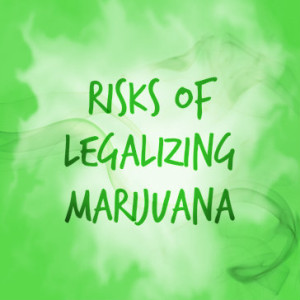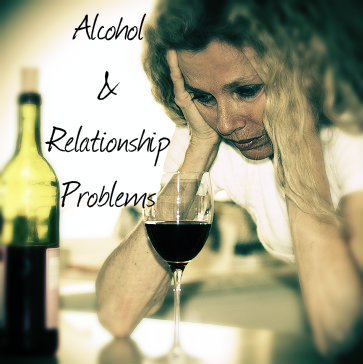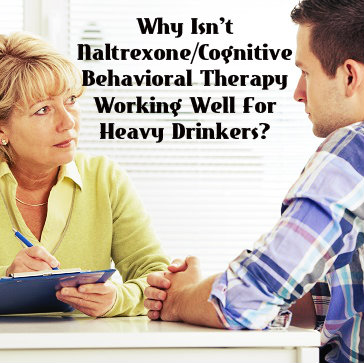31 Jul 2014
The Downside Of Legalizing Marijuana
When examining the issue of marijuana legalization, pros and cons fill up both sides of the balance sheet. But while there may be some benefits to legalization, it should be noted that benefits of pot legalization do not directly translate to benefits of pot use. While the downsides and dangers of pot use are plentiful, that is a separate issue.
Marijuana – Not Harmless Or Equivalent To Medicine
 One of the primary cons of marijuana legalization is the mixed message it sends to users and potential users, especially teens. Proponents of marijuana legalization speak of health benefits or cite it as a treatment for chronic pain or for the relief of symptoms associated with chronic illnesses such as cancer, multiple sclerosis and even AIDS. This language takes marijuana out of the realm of “illicit drug” and into the category of “alternative medicine.” If not seen as a substance that promotes health, it will, at least be seen as harmless. Unfortunately marijuana is not harmless, nor is it akin to medicine.
One of the primary cons of marijuana legalization is the mixed message it sends to users and potential users, especially teens. Proponents of marijuana legalization speak of health benefits or cite it as a treatment for chronic pain or for the relief of symptoms associated with chronic illnesses such as cancer, multiple sclerosis and even AIDS. This language takes marijuana out of the realm of “illicit drug” and into the category of “alternative medicine.” If not seen as a substance that promotes health, it will, at least be seen as harmless. Unfortunately marijuana is not harmless, nor is it akin to medicine.
Though marijuana has been legalized in some states for medical use, that does not mean it has been approved by the FDA as a treatment for any sort of medical condition. Nor should it be linked with other non-FDA approved treatments and therapies such as herbal remedies, alternative medicines or vitamins. Regardless of its legal status, marijuana is a drug and it carries with it health risks and consequences. And voting to legalize it actually undermines the authority of the FDA, putting the task of approving drugs and medical treatments into the hands of voters and legislators.
High Risk For Dependence And Health Consequences
Questionable health benefits notwithstanding, people who use marijuana for medical or recreational purposes are building a relationship with a substance that carries a high risk of dependence and addiction. Using marijuana “medically” does not mean that one is exempt from short-term memory loss, that cognitive function is not impaired, that lung tissue is not damaged or that it may not become a gateway drug to more potent and dangerous substances.
Risks Outweigh Suggested “Benefits”
Those who oppose legalization continue to argue that any suggested benefits of marijuana use are far overshadowed by the risks and dangers. Anti-legalization doctors and scientists demonstrate that there are no measurable health benefits of marijuana use. The scientific research does not support the claims and adequate, reliable research has not been conducted. The conditions for which medical marijuana may be useful are broad and vague. Opponents also note that the legal, non-marijuana therapies currently on the market are more effective in treating the conditions for which pot is suggested
The cons of legalizing marijuana are many. Though marijuana may have some suggested (though not scientifically proven) health benefits, it is important to remember that those benefits come with risk as well. Legalization of marijuana not only sends the wrong message to young people about what is medicine and what isn’t, what is healthy and acceptable for use and what isn’t, it also may open the door to increased legalization of pot for recreational use. This in turn may lead to the demand for more hardcore illicit drugs, not to mention an increase in the national addiction epidemic.
Learn More About Drug Rehab Addiction News And Laws
30 Jul 2014
Is Alcohol Ruining Your Relationships?
You don’t need to be an alcoholic to have a problem with alcohol. Many people still believe that raging alcoholics are the only people who abuse alcohol. There are many signs that indicate you may have a problem, and one of the biggest is the way in which drinking effects your relationships. Whether it’s with your kids, spouse, parents or anyone else important to you, if alcohol is negatively impacting your relationships with other people, you have a problem.
Relationship Problems Signal Alcohol Abuse
 Having a problem with alcohol does not look the same from one person to the next. There are varying degrees, from the initial stages of abuse to full-blown non-functioning alcoholic. If you are questioning your relationship with alcohol, you should be aware of the signs of abuse. One of the most obvious ones is continuing to drink in spite of problems it creates in your relationships. Maybe you and your spouse only fight when you’re drunk. Or, you forget to pick your kids up from activities because you’re out at the bar with friends. Whatever it is, if drinking is at the root of a problem in one of your relationships, you are abusing alcohol.
Having a problem with alcohol does not look the same from one person to the next. There are varying degrees, from the initial stages of abuse to full-blown non-functioning alcoholic. If you are questioning your relationship with alcohol, you should be aware of the signs of abuse. One of the most obvious ones is continuing to drink in spite of problems it creates in your relationships. Maybe you and your spouse only fight when you’re drunk. Or, you forget to pick your kids up from activities because you’re out at the bar with friends. Whatever it is, if drinking is at the root of a problem in one of your relationships, you are abusing alcohol.
Alcohol Makes You Argue
One of the things many of us like about drinking is that it makes us feel bolder. Alcohol works in the brain to lower inhibitions, which is why you may feel more inclined to speak your mind when you’ve been drinking. An argument you would never start when sober often feels right when you’re tipsy. Arguing on a regular basis, especially unfruitful arguments fueled by alcohol, is not good for any relationship. Furthermore, many people also get aggressive when drinking. If you are normally a peaceful person but you feel angry when you drink, the people you care about around you are the ones who will suffer from your wrath.
Alcohol Takes Priority in Your Life
Constant arguing is bad for your relationships, but so is neglect. Another common relationship problem fueled by drinking is misplacement of priorities. If your spouse feels neglected because you would rather go out drinking with buddies, you are placing alcohol ahead of her on your list. The same can often happen with kids. Did you miss a school event or a soccer game because you were too drunk to get there? Your children can feel as if they are unimportant to you, which will have a terrible impact on your relationship with them.
You Deny Having a Problem
When your loved ones approach you to discuss your drinking and how it impacts them, do you brush it off? Do you refuse to admit the effect alcohol is having on your life and relationships? If so, this can further exacerbate the issue. If you can admit to the problem and agree to take steps to correct it, your loved ones will most likely support you. On the other hand, if you continue to deny the problem, you will only further damage your relationships. No change can happen until you open your eyes and see what alcohol has done to the relationships you have with the people you care about.
Your drinking may have already trashed any number of relationships in your life, but take away something positive from this. If you can take a step back and see what impact alcohol has had, you are in a position to make changes before it gets worse. Before you succumb to the disease of alcoholism, you can take steps now to turn your life around. Slow or stop your drinking, repair your relationships and move on with your life.
Learn More About The Link Between Alcoholism And Substance Abuse Among Women With Bipolar Disorder
IF YOU OR SOMEONE YOU LOVE IS STRUGGLING WITH ALCOHOL – PICK UP THE PHONE AND CALL US NOW – HEALING AND PEACE CAN BE YOURS TODAY!
29 Jul 2014
What Are The Steps Of Drug Rehab?
Going to rehab for drug addiction is a daunting challenge. You have to face up to your addiction, entrust others with your care and get ready to face the future without drugs or alcohol. With such big and scary steps to take, the last thing you need is to be afraid of what happens in drug rehab. When you know what to expect and what you are facing, the whole experience will be less frightening and you can devote your energy to healing and getting sober.
What Is The First Step In Rehab?
 The first thing you can expect to go through, no matter what kind of drug rehab you choose, is detox. If you are wondering what happens during detox, you are not alone. Many addicts find this to be the most frightening aspect of getting clean. It’s possible that the program you choose will expect you to go through detox before entering, but most offer detox services. To detox means taking the couple/few days necessary to stop using substances and wait while the last of them leave your body. You can expect to feel withdrawal symptoms during this process, including anxiety, irritability, fatigue, headaches, nausea and insomnia. However, many detox programs offer more comfortable medicated or holistic detox options.
The first thing you can expect to go through, no matter what kind of drug rehab you choose, is detox. If you are wondering what happens during detox, you are not alone. Many addicts find this to be the most frightening aspect of getting clean. It’s possible that the program you choose will expect you to go through detox before entering, but most offer detox services. To detox means taking the couple/few days necessary to stop using substances and wait while the last of them leave your body. You can expect to feel withdrawal symptoms during this process, including anxiety, irritability, fatigue, headaches, nausea and insomnia. However, many detox programs offer more comfortable medicated or holistic detox options.
What Happens During A Drug Rehab Intake?
Once you have detoxed, whether at your chosen facility or at a specialized detox center, you will go through intake at your rehab program. This involves being assessed by the professionals working in the facility, including a doctor or nurse, a therapist or psychiatrist, and other addiction specialists. You will also be expected to go through some paperwork. If you feel uncomfortable filling out and signing forms in your current state, ask if you can bring a trusted friend or family member along to help.
During this initial period you will also begin to shape your treatment plan. If you have chosen a successful drug rehab, you can expect to have a plan individualized for your specific needs. It will be based on the assessment done during your intake, as well as on your own input and should be approved by a doctor or nurse who will go over it with you. Your plan may change as you go through treatment and your needs change.
What Do You Do In Drug Rehab?
Once you have a treatment plan in hand and you have successfully detoxed, you will begin your treatment. The implementation of your treatment plan makes up the bulk of your experience in rehab. Make sure it is explained to you in advance, and don’t hesitate to ask questions about it so that you know what to expect. You will likely participate in daily counseling sessions. Some will be with just you and your therapist, while others will be group sessions in which you will be asked to open up with your fellow addicts in recovery.
You may also engage in recreational activities and educational workshops. These will be strictly scheduled so that you are always doing something and so that your downtime is kept to a minimum. This does not mean that you will never be alone or allowed to reflect, just that your time in rehab will be busy and engaging.
Direction For Your Continuing Recovery
Finally, as your time in rehab is nearing an end, you can expect to work with your therapist or other experts at the rehab facility to plan your future. The caring professionals with whom you have been working will not simply send you out the door hoping for the best. They will help guide you toward a future that is full of life and free of addiction.
IF YOU OR YOUR LOVED ONE IS STRUGGLING WITH ADDICTION AND
NEED HELP FINDING A REHAB FACILITY, CALL US NOW!
28 Jul 2014
Why Smokers Know About Quitlines, But Don’t Call
Smoking quitlines are telephone-based services that provide support and advice for people trying to kick the habit. In combination with the care provided by an addiction specialist or other qualified health professionals, use of one of these services can significantly increase the chances that a current cigarette user will successfully stop smoking. In a study published in May 2014 in the journal Nicotine & Tobacco Research, researchers from three U.S. institutions used information from a project called the National Adult Tobacco Survey to estimate how many U.S. smokers know that smoking quitlines exist.
 In the majority of cases, adult and teenage users of cigarettes in the U.S. and throughout the world are addicted to nicotine. Nicotine addiction is common among smokers, in part, because of the need to use the drug repeatedly in order to keep feeling its desired effects on the brain’s pleasure levels. Once a nicotine addiction is established, frequently repeated brain exposure to the drug also helps account for the difficulties that commonly appear during smoking cessation attempts. In fact, even people who eventually quit smoking typically fail to break their reliance on cigarettes/nicotine at least once.
In the majority of cases, adult and teenage users of cigarettes in the U.S. and throughout the world are addicted to nicotine. Nicotine addiction is common among smokers, in part, because of the need to use the drug repeatedly in order to keep feeling its desired effects on the brain’s pleasure levels. Once a nicotine addiction is established, frequently repeated brain exposure to the drug also helps account for the difficulties that commonly appear during smoking cessation attempts. In fact, even people who eventually quit smoking typically fail to break their reliance on cigarettes/nicotine at least once.
Addiction specialists and public health officials know that the odds of achieving smoking cessation success go up sharply for people who seek professional help and use one of the proven methods for quitting smoking. These methods include nicotine replacement therapy, the use of either of two nicotine-free medications called buproprion (Zyban) and varenicline (Chantix), and the use of any of several forms of behavioral therapy or counseling.
Smoking Quitlines
Some people aren’t sure exactly where to turn when they make the decision to stop smoking. Others may lack some or all of the resources needed to secure help from a doctor or involvement in a smoking cessation program. Smoking quitlines are publicly available options that provide smoking cessation-related information and advice to anyone interested in pursuing smoking cessation, regardless of considerations such as place of residence or level of income. All 50 states in the U.S. have such quitlines established, the National Cancer Institute’s Smokefree.gov reports. In addition, some quitlines operate nationally. As a rule, state and national quitlines employ counselors specifically trained to give advice remotely and direct callers to appropriate sources of support in their local areas.
How Many Smokers Know About Quitlines?
The National Adult Tobacco Survey (NATS) is a nationwide project that tracks tobacco use rates, and also tracks the underlying factors that make it more or less likely that any given person will start smoking or continue to smoke after initiating cigarette use. In the study published in Nicotine & Tobacco Research, researchers from the Centers for Disease Control and Prevention, Emory University and UC San Diego used data from the most recent version of NATS (conducted in 2009 and 2010) to estimate how many smokers in the U.S. know that smoking quitlines exist. The researchers also used the NATS data to identify the demographic factors (racial/ethnic background, gender, socioeconomic standing, etc.) that make it more or less likely that any particular smoker will know about quitlines. In addition to checking awareness levels among current smokers, they checked awareness levels among people who used to smoke and people who had never smoked.
The researchers concluded that more than half (53.9 percent) of current smokers know that smoking quitlines exist. In addition, 34 percent of ex-smokers and 27 percent of people with no history of smoking know about quitlines. Among active smokers who try to quit, the groups most likely to know that smoking quitlines exist are women, people who have recently visited a doctor and people who live in states that devote considerable amounts of money to anti-smoking efforts. Conversely, the groups of active smokers interested in quitting who are least likely to know that smoking quitlines exist include people who make less than $50,000 a year, African Americans and other people of non-Hispanic/Latino descent.
Who Is Most Likely To Use A Smoking Quitline?
Despite the respectable level of awareness of smoking quitlines among active smokers, the authors of the study found that only 7.8 percent of active smokers who attempt to stop using cigarettes call a quitline. The groups of active smokers most likely to utilize a quitline are people who receive advice from a doctor, people who live in states with well-funded anti-smoking programs and African Americans and other people of non-Hispanic/Latino descent. Older adults form the single group of active smokers least likely to contact a smoking quitline. The study’s authors note that awareness of smoking quitlines among active smokers varies widely from state to state.
Discover Which Anti-Smoking Message Is Most Affective On Smokers?
A recent study from the University of California, San Diego (UCSD) found that men infected with HIV who use methamphetamine may experience faster T-cell activation and proliferation. In other words, the use of methamphetamine may cause HIV to progress more rapidly to AIDS.
Who Was Studied?
 The study looked at 50 men who have sex with men (MSM). The average age of the participants was 46, and each had been on retroviral medication for HIV for an average of four years. Forty-two percent of the participants were white, 20 percent were black and 4 percent were Hispanic.
The study looked at 50 men who have sex with men (MSM). The average age of the participants was 46, and each had been on retroviral medication for HIV for an average of four years. Forty-two percent of the participants were white, 20 percent were black and 4 percent were Hispanic.
Once a month for a year, the study participants completed a survey about their adherence to antiretroviral treatment and their use of various party drugs. Twenty of the men reported using marijuana during the study period, 16 used meth, 12 reported drinking alcohol, 11 used cocaine and 13 of the respondents used some other party drug.
The researchers also used frozen samples of a type of blood cell with a round nucleus known as peripheral blood mononuclear cells (PBMCs) to evaluate reservoirs of HIV DNA, cellular HIV RNA, and the activation and proliferation of immune cells named CD4 and CD8 (sometimes known as T-helper cells or T cells). HIV binds itself to CD4 cells, which multiply in order to help combat infection. In this way, the immune system actually makes more copies of the virus it is trying to destroy.
What The UCSD Study Found
The UCSD study found that the men who used meth had higher levels of activated and proliferating CD8 and CD8 cells, poorer CD4/CD8 ratios, and greater reservoirs of HIV DNA that had been incorporated into the genetic material of a host cell—proviral HIV DNA.
The study also found higher cytomegalovirus (CMV) load and shedding in the semen of meth users. While HIV is a sexually transmitted disease (STD), and sexual activity remains the leading cause of HIV transmission around the world, levels of HIV in the semen of an infected man are actually lower than the levels of HIV in the blood. However, HIV levels in semen are higher in a subgroup of men, and the UCSD study found that HIV levels in semen were more likely to be high in the men who used meth. A higher level of HIV in semen makes it more likely that an infected man could transmit the disease through unprotected intercourse. Previous studies have found that HIV transmission among meth users occurs at a higher rate than among other HIV-positive individuals.
Although the participants in this study reported a variety of recreational drug use, meth was the only drug that appeared to have any significant influence on T-cell activation and proliferation, and on levels of proviral HIV DNA.
In order to eliminate variables that could also explain the difference in the progression of HIV, the researchers selected MSM of a similar age, with similar baseline CD4 and CD8 counts, who had spent a similar amount of time on antiretroviral medications, and who were not infected with any other STDs that could contribute to the worsening of their HIV.
Researchers do not yet understand why the use of methamphetamine could speed the progression from HIV to AIDS or increase cognitive impairment among men with HIV. One possibility is that meth use corresponds with difficulty sticking to a regimen of anti-viral medication (although the men in this study who used meth reported similar rates of adherence as non-meth users). Risky behaviors common to meth users may also have something to do with speeding health deterioration among men with HIV.
However, the fact that the other recreational substances used by men in the study did not affect their HIV makes it somewhat less likely that risky behaviors associated with drug use will successfully explain the way meth affects HIV. It may be that there is some physiological cause and effect through which meth use directly promotes AIDS progression and increased cognitive deterioration.
If you or someone you love is struggling with a drug or alcohol addiction – Call us now – Help is available 24/7…It’s worth it!
Opioid maintenance treatment is a form of addiction treatment that uses opioid-based medications as safer substitutes for heroin or other powerful opioid substances of abuse. The two medications typically used in this kind of treatment are methadone and buprenorphine. In a study published in March 2014 in the journal Addiction, a multinational German and Swiss research team explored the potential usefulness of an opioid medication called slow-release oral morphine as an alternative to methadone in opioid maintenance treatment. These researchers concluded that slow-release oral morphine appears to be at least as effective as methadone in treating people with opioid use disorder.
Opioid Use Disorder And Medications
 People affected by opioid abuse or opioid addiction can receive a diagnosis for a condition officially known as opioid use disorder. Some addiction programs use opioid-based medications as temporary treatments for this disorder in order to help their patients/clients avoid the immediate pitfalls of opioid withdrawal. Others use opioid-based medications as longer-term alternatives for people affected by opioid use disorder.
People affected by opioid abuse or opioid addiction can receive a diagnosis for a condition officially known as opioid use disorder. Some addiction programs use opioid-based medications as temporary treatments for this disorder in order to help their patients/clients avoid the immediate pitfalls of opioid withdrawal. Others use opioid-based medications as longer-term alternatives for people affected by opioid use disorder.
Both methadone and buprenorphine produce their drug effects inside the brain more slowly than heroin and other commonly abused opioid substances. In addition, they have a lower maximum effect than the typical abused opioid. During opioid maintenance treatment, doctors rely on these characteristics to introduce either methadone or buprenorphine as an alternative to the unrestrained drug intake associated with unaddressed opioid addiction.
When used in this context, both medications allow addicted users to gain control over their drug intake while simultaneously evading the onset of severe opioid withdrawal. Methadone has a stronger opioid effect than buprenorphine and comes in the form of tablets or oral solutions. Buprenorphine is often combined with a second non-opioid medication called naloxone (which helps reduce any risks for buprenorphine abuse) and comes in the form of a tablet or strip placed under the tongue.
Slow-Release Oral Morphine
Morphine is one of the primary mind-altering substances found naturally in a plant called the opium poppy, which acts directly or indirectly as the originating source of all opioid drugs and medications. Pharmaceutical companies throughout the world manufacture purified forms of this substance as treatments for certain forms of mild and severe pain, including surgical pain and the pain associated with various forms of cancer.
Some forms of morphine pass rapidly to the brain after entering the bloodstream and have a relatively short-term impact on the ability to experience pain. Other forms are designed to pass into the brain slowly over an extended period of time and provide longer-term pain relief. Slow-release oral morphine, also known as extended-release morphine, is a specific type of long-acting morphine commonly prescribed for the treatment of significant pain that doctors expect to continue for prolonged amounts of time.
Slow-Release Oral Morphine’s Usefulness In Opioid Maintenance Treatment
In the study published in Addiction, researchers from six German institutions and one Swiss institution used a project involving 157 German and Swiss adults affected by opioid dependence/addiction to examine the usefulness of slow-release oral morphine in opioid maintenance treatment.
All of these individuals previously received methadone as part of their treatment; for a total of 22 weeks, some of the participants received slow-release oral morphine instead of methadone. The researchers monitored each individual’s continuing involvement in heroin use with two weekly urine drug tests and compared the results of the tests gathered from the methadone users to the results of the tests gathered from the slow-release morphine users.
After completing their comparisons, the researchers found that the slow-release morphine users were slightly more likely to test positive for heroin use during treatment than the methadone users. However, the difference between the two groups was minor and insignificant. The methadone users also had somewhat higher chances of remaining active participants in opioid maintenance treatment than the slow-release morphine users. However, the researchers again characterized the differences between the two groups as negligible. In addition, the group using slow-release morphine did not experience serious opioid-related harm during treatment any more often than the group using methadone.
Benefits Of Easier-Access Morphine For Opioid Maintenance Treatment
The authors of the study published in Addiction concluded that slow-release morphine is apparently just as useful in opioid maintenance treatment as methadone. This is important, in part, because federal guidelines restrict the places in which recovering addicts can receive methadone-based treatment. The authors note that the usefulness of slow-release morphine depends upon the amount of the medication used during opioid maintenance. As a rule, the number of heroin-positive urine tests drops as the amount of slow-release morphine given to a patient/client increases.
If You Or A Loved One Is Struggling With An Addiction…Don’t Give Up, Help Is Waiting – Call Us Now
23 Jul 2014
How To Stage An Intervention
Helping someone you love admit to having an addiction and agree to get help is a big challenge. It can be tempting to lecture, nag, and even beg your loved one to get help, but sometimes what it really takes is a focused confrontation. When it seems like your loved one will never let go of denial or agree to get help, consider a group intervention. Before you throw one together, make sure you understand what it means to host an intervention, learn how to optimize the chance of success and consider what to do if it fails.
What Is An Intervention?
 An intervention is a planned meeting during which you and other loved ones confront someone who is struggling with addiction. While interventions have traditionally involved asking the addict to sit and be quiet while others talk, more recently they have become more like conversations. The more modern approach allows the addict to bring up his concerns and to ask questions in a safe environment. The idea is to not blame or shame the addict, but to make sure he understands how many people care about him, are worried about him and want to help.
An intervention is a planned meeting during which you and other loved ones confront someone who is struggling with addiction. While interventions have traditionally involved asking the addict to sit and be quiet while others talk, more recently they have become more like conversations. The more modern approach allows the addict to bring up his concerns and to ask questions in a safe environment. The idea is to not blame or shame the addict, but to make sure he understands how many people care about him, are worried about him and want to help.
An intervention typically includes a planned approach, specific examples for the addict regarding his behaviors and their consequences, and a statement from all of the participants regarding what they will do if he continues to refuse help. Participants may include family members, friends, coworkers and sometimes an addiction professional.
What Makes An Intervention Successful?
You can never guarantee that your intervention will be successful (success is measured by the willingness of the addict to accept and get help), but you can ensure the best odds of success by carefully preparing for the event. An intervention should start with thorough planning that includes participants, deciding what each person will say and even having an outline for how the event will proceed. Practicing ahead of time is also a good idea, as is asking each person to write down what he or she wants to say.
A good intervention should also include specific consequences. For instance, you might tell the addict that you are cutting off financial support if he refuses to get help. Each person participating should be ready with a consequence to help motivate the addict to accept treatment. It is also important to select the timing of the intervention carefully. It would be best if your loved one is sober, so choose a time and day that this is most likely to be the case. And finally, be ready with treatment options.
When To Rely On A Professional Interventionist
There are addiction professionals who specialize in planning and hosting interventions and if you feel that you cannot handle holding one on your own, consider consulting with one of these specialists. There are other good reasons to turn to a seasoned interventionist professional: if your loved one has a serious mental illness, has a history of violence, cannot be counted on to be sober for the event or if he shows signs of suicidal behaviors or attitudes. In these cases, confronting your loved one may be beyond your abilities.
When An Intervention Plan Doesn’t Work
As you prepare for the intervention, be ready for the possibility that your loved one will continue to deny his problem and refuse to get treatment. Make sure that everyone involved is prepared to follow through with the consequences that you are setting for him. If it means cutting this person out of your life because of the harm he is causing you, be ready to do it. Remember that you cannot control his choices or his behaviors. You can offer him all the help in the world, but only he can accept it.
If You Need More Help With An Intervention Plan, Call Us Now! Help Is Available 24/7
22 Jul 2014
Why Do Heavy Drinkers Have A Lower Adherence To Naltrexone/Cognitive Behavioral Therapy?
Treatment programs for people affected by alcoholism commonly feature medications, some form of counseling or psychotherapy, or a combination of medication and counseling or psychotherapy. Together, a medication called naltrexone and a form of therapy called cognitive behavioral therapy have been shown to produce beneficial results in controlled testing. In a study published in March 2014 in The American Journal of Drug and Alcohol Abuse, researchers from two Finnish institutions sought to determine if the naltrexone/cognitive behavioral therapy combination works as well in a less controlled setting that mimics a typical treatment environment.
What Is Naltrexone And How Does It Work?
 Naltrexone is a medication that blocks access to sites, called opioid receptors, located on nerves in both the brain and certain parts of the body. When used in a person addicted to opioid substances of abuse, this blocking action prevents the characteristic “high” associated with narcotics. For reasons that researchers and doctors don’t fully understand, the same blocking action helps reduce the amount of pleasure derived from alcohol consumption, in addition to decreasing the intensity of any urges to drink more alcohol.
Naltrexone is a medication that blocks access to sites, called opioid receptors, located on nerves in both the brain and certain parts of the body. When used in a person addicted to opioid substances of abuse, this blocking action prevents the characteristic “high” associated with narcotics. For reasons that researchers and doctors don’t fully understand, the same blocking action helps reduce the amount of pleasure derived from alcohol consumption, in addition to decreasing the intensity of any urges to drink more alcohol.
Together, these effects can help a person in recovery from alcoholism avoid relapsing back into a pattern of active drinking. As a rule, doctors give the medication only to recovering alcoholics who have entirely or largely halted their alcohol intake; doctors also typically use naltrexone as part of an overall treatment approach rather than as a sole component in treatment. The medication comes in forms that include tablets and an extended-release injection.
Cognitive Behavioral Therapy
Cognitive behavioral therapy is the umbrella term for a group of therapeutic approaches that focus on helping patients/clients identify and change thoughts and beliefs that can contribute to a range of harmful behaviors, including the abuse of alcohol and/or drugs.
Specific approaches that fall under this umbrella include rational behavior therapy, dialectic behavior therapy and rational emotive behavior therapy. Cognitive behavioral therapy takes place in a limited timespan that usually lasts for about four months. Unlike some forms of psychotherapy that maintain a strict hierarchy between the therapist and patient/client, it features a shared process that calls on the patient/client to take an active role in achieving his or her treatment objectives. The objectives for any given individual are specific to his or her particular situation and self-perceived needs and wants.
Does The Combination Of Naltrexone And Cognitive Behavioral Therapy Work For Alcoholism?
In the study published in The American Journal of Drug and Alcohol Abuse, researchers from Finland’s University of Helsinki and National Institute for Health and Welfare assessed the usefulness of the naltrexone/cognitive behavioral therapy combination as a treatment for alcoholism in a real-world environment. They chose this line of inquiry, in part, because of the relative lack of information on the combination in people actively receiving treatment outside of a controlled, experimental setting. During the study, the researchers gathered data from 315 outpatients receiving both naltrexone and cognitive behavioral therapy for a 20-week period. Measurements of treatment success included relative levels of alcohol intake and relative levels of alcohol craving among the participants.
After completing their analysis of the treatment outcomes, the researchers concluded that the naltrexone/cognitive behavioral therapy combination does not work equally well for all people recovering from alcoholism. Those individuals most likely to benefit from naltrexone and cognitive behavioral therapy were people who consumed relatively small amounts of alcohol before entering treatment. Conversely, the individuals least likely to benefit from the combination drank relatively heavily before entering recovery, had never been in a recovery program before and had a fixed pattern of alcohol consumption before entering treatment.
When Naltrexone And Cognitive Behavioral Therapy Works Best
The authors of the study published in The American Journal of Drug and Alcohol Abuse note that, strictly speaking, the combination of naltrexone and cognitive behavioral therapy did not fail to produce good results.
Instead, those individuals who fared poorly often did not take their prescribed doses of the medication, especially when they continued to engage in significant amounts of drinking while taking part in treatment. The authors believe that the fairly low rate of compliance with naltrexone use may pose a serious concern for the real-world treatment of alcoholism, especially among severely affected alcoholics.
Consequently, they also believe that alcohol programs may need to use a more comprehensive set of treatment options in order to help heavily affected alcoholics improve while in recovery. On a related note, doctors can use the extended-release, injectable form of naltrexone (Vivitrol) to overcome some of the problems with medication compliance.
Read Our Other Alcoholism Treatment Posts


